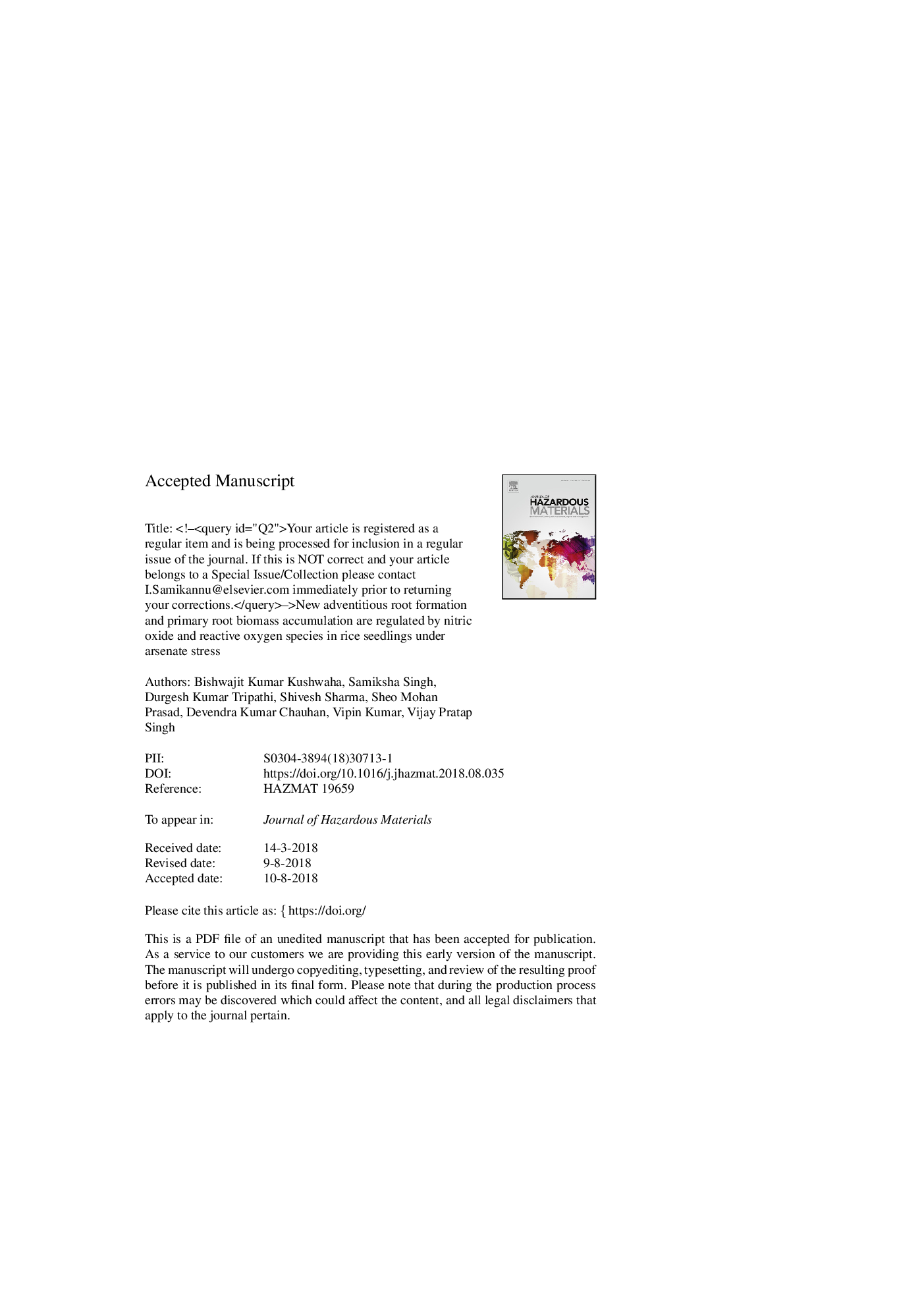| Article ID | Journal | Published Year | Pages | File Type |
|---|---|---|---|---|
| 8953994 | Journal of Hazardous Materials | 2019 | 22 Pages |
Abstract
Nitric oxide (NO) and reactive oxygen species (ROS) are important signaling molecules regulating development of plants. However under metal stress, in developmental processes of plants their implications are not largely known. Therefore, in the present study, role of NO and ROS crosstalk in the regulation of formation of new adventitious roots (NARs) and primary root biomass accumulation (PRBA) has been investigated in rice seedlings under arsenate (AsV) stress. Addition of sodium nitroprusside (SNP, a donor of NO) induced formation of NARs, increased PRBA, and maintained the redox status of ascorbate and cell cycle dynamics. However, addition of NG-nitro-l-arginine methyl ester (L-NAME, an inhibitor of nitric oxide synthase) and 2-4-carboxyphenyl-4,4,5,5-tetramethylimidazoline-1-oxyl-3-oxide (c-PTIO, a NO scavenger) either in presence of SNP or in its absence blocked formation of NARs and reduced PRBA. Further, to decipher crosstalk of NO and ROS, we used diphenylene iodonium (DPI, an inhibitor of NADPH oxidase), and even in presence of SNP it blocked formation of NARs which indicate that ROS are also essential for formation of NARs. Further a connection of NO-ROS signaling with the redox status of ascorbate and the cell cycle dynamics, governing formation of NARs and PRBA in rice seedlings under AsV stress is discussed.
Related Topics
Physical Sciences and Engineering
Chemical Engineering
Chemical Health and Safety
Authors
Bishwajit Kumar Kushwaha, Samiksha Singh, Durgesh Kumar Tripathi, Shivesh Sharma, Sheo Mohan Prasad, Devendra Kumar Chauhan, Vipin Kumar, Vijay Pratap Singh,
